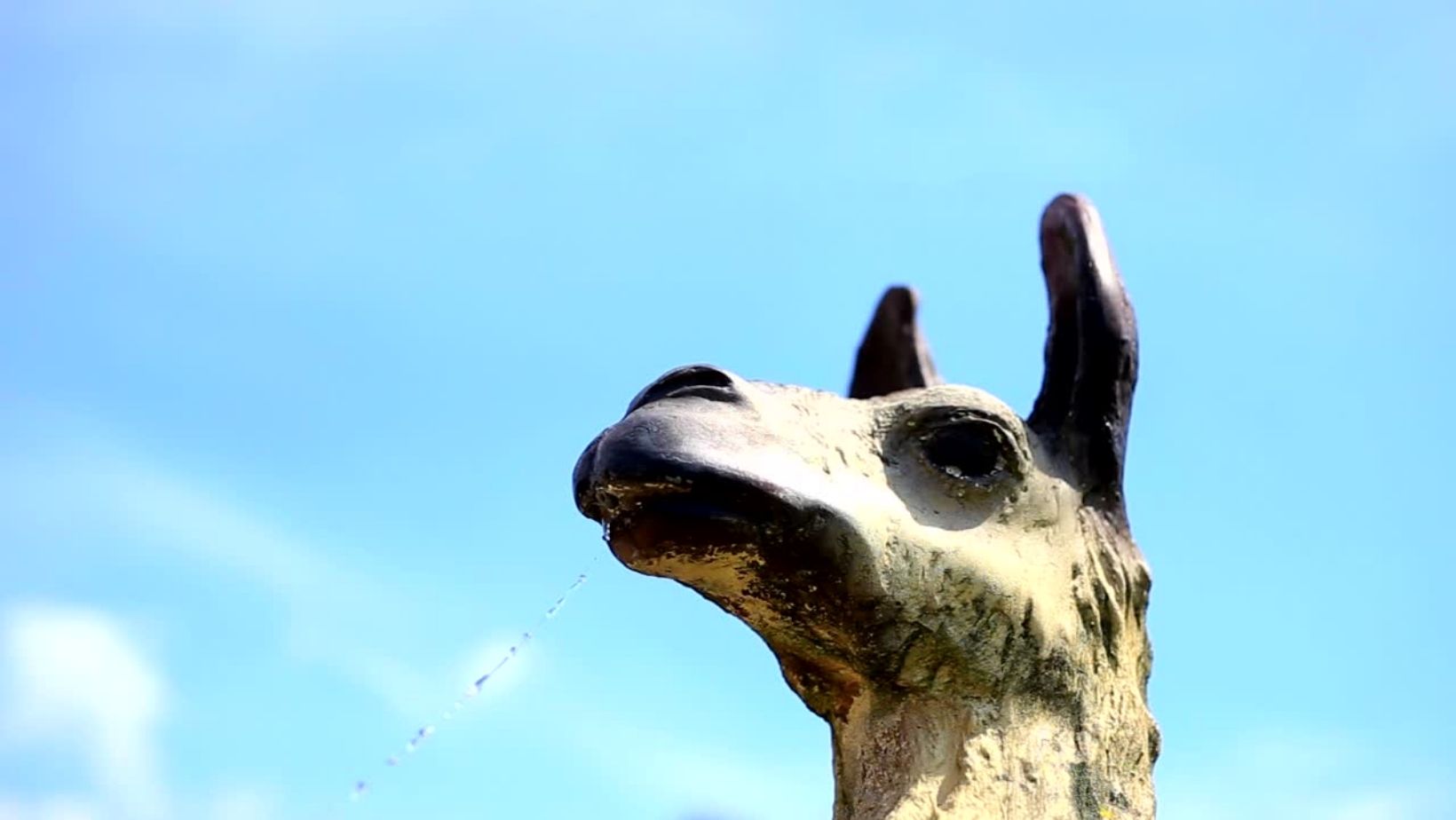
Everyone has heard stories about llamas spitting, but you may wonder: do llamas spit? And if so, how far can a llama spit? In this blog post, we’ll answer your questions about llamas and spitting. We’ll look at the science behind the spitting behavior of llamas, explore why they do it, and even find out how far they can spit! So get ready to learn more about these curious creatures who have captivated us for centuries.
Post Contents
Do llamas spit?
Yes, llamas do spit. They typically only spit when they feel threatened or are agitated.
It’s a common question that has divided the llama community for years. Some say llamas do spit, while others claim they don’t. So who’s right?
The answer, it turns out, is both sides. Llamas do spit, but not in the way that most people think.
Llamas typically only spit when they feel threatened or are trying to defend themselves. When a llama feels like it is in danger, it will sometimes spit at its aggressor as a way to warn them off. This behaviour is most commonly seen in male llamas who are protecting their territory from other males.
Llamas also sometimes spit at humans when they are angry or upset. This usually happens when a llama feels like it has been mistreated or unfairly treated. If you’re ever on the receiving end of a llama’s anger, you’ll know it!
How far can llamas spit?
When a llama spits, it can shoot its saliva up to 6 feet! And sometimes even further if they are really upset.
They tend to aim for the face, so watch out if you ever get on a llama’s bad side!
Do Llama Spits Hurt?
Llamas are often thought of as spitters, but do their spits actually hurt? It turns out that llama spit is not as acidic as many people think, and thus it is unlikely to cause much pain if it comes into contact with skin.
However, llamas do have strong musculature in their necks and can generate a fair amount of force when they spit. This means that if you get hit by a stream of llama spit, it could sting or even leave a bruise.
What Does It Mean If A Llama Spits At You?
If a llama spits at you, it means that the llama is either annoyed or scared. Spitting is a defense mechanism for llamas, and they will usually only spit if they feel threatened.
If you are close to a llama when it spits at you, the llama’s saliva could get into your eyes and mouth, which could cause irritation.
What Spits More Alpaca Or Llama?
Regarding spitting, both alpacas and llamas can give a good ejection. In general, llamas tend to be the better spitters, with some reports claiming that they can spit up to 15 feet.
Alpacas, on the other hand, typically only spit about 10 feet. However, there is some anecdotal evidence of alpacas spitting even further than llamas. So, when it comes to who spits more between these two animals, it’s really a matter of personal preference.
How Long Does Llama Spit Last?
Llamas are often thought to spit when they are angry or agitated, but llamas will actually only spit on other llamas.
When two llamas meet for the first time, they will often greet each other by spitting.
While llama spit does not usually last very long, it can linger for a short while if it hits another llama’s fur.
Is Llama Saliva Poisonous and Harmful?
Llama spit, while not harmful in the sense of causing physical injury, can be unpleasant due to its foul odor and stickiness. Llamas may spit as a form of communication or defense, especially when feeling stressed, scared, or annoyed.
The spit is primarily composed of regurgitated stomach contents and can contain saliva, partially digested food, and bacteria. While it’s not toxic, it’s best to avoid contact with llama spit to prevent discomfort and potential bacterial transmission.
Llama saliva is not poisonous. However, it can be irritating to the skin and eyes. If you come into contact with llama spit, washing the area with soap and water is best.
How aggressive are llamas?
Llamas are generally not considered aggressive animals, but their behavior can vary depending on factors such as genetics, handling, and socialization. While llamas are known to be protective of their territory and may display defensive behaviors when feeling threatened, such as spitting or kicking, they are usually docile and gentle creatures when treated with respect and care.
How Dangerous Are Llamas?
Regarding danger, llamas are generally considered low-risk animals compared to more aggressive species. However, they can pose a potential danger if mishandled or provoked. Their powerful legs and sharp hooves can inflict injury if they feel threatened or cornered, and their habit of spitting can be unpleasant and potentially escalate a situation if not properly addressed.
Overall, practicing good handling techniques, providing proper training and socialization, and respecting their natural behaviors can help mitigate any potential risks associated with llamas.
Conclusion
We can now say with confidence that yes, llamas do spit and they are capable of spitting up to 10 feet. While llama-spitting is generally not considered a desirable behaviour, it does serve an important purpose in the wild by deterring predators. With this information in mind, it’s clear that if you want to get close to these majestic animals then you should proceed with caution as they might not be so welcoming!
So, while llamas do spit, it’s not something they do all the time or without reason. Now that you know the truth about llamas and spitting, you can go forth and spread the word to all your friends!

Hi, I am Dale. My husband and I bought our first llama, an 18-month-old male llama, Pumpernickel, in 1984. Since then, they are evergrowing; LlamaWeb is intended to provide information about llamas for people interested in these South American camelids.






